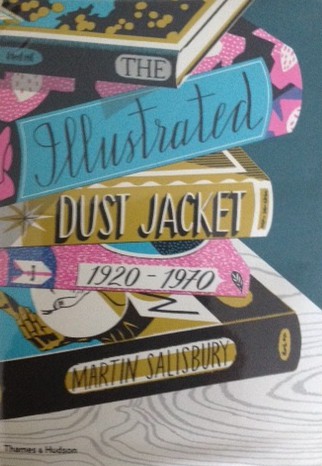Inspiring Older Readers
 posted on 29 Oct 2017
posted on 29 Oct 2017
The Illustrated Dust jacket 1920 – 1970 by Martin Salisbury
It’s not very often that I squeak out aloud when I find a new book on the shelves but, slightly embarrassingly, that’s exactly what happened when I spotted this new offering from Martin Salisbury. Big, bold and with a fabulous dust jacket of its own designed by Bill Bragg you will immediately be reminded of Edward Bawden – a clever little homage to one of the great book illustrators, I suspect.
If a committee of book commissioning agents, an author, a designer and a printer had sat down together around a table to design the perfect book for me, I’m pretty sure this is the one they would have come up with. If there’s anything that obsesses book collectors as much (or maybe even more) as first editions in fine condition, it’s the dust jacket. For some collectors of 20th century books, the jacket is everything and fortunes have been paid for the rarer ones.

This book reviews the first 50 years of the dust jacket as an object of desire. Prior to the 1920s the focus was on the cloth boards of the book itself and some beautiful designs can be found on 19th and very early 20th century volumes. At this time the dust wrapper was a plain Jane, something simply to protect the cloth boards and which would be thrown away once the book was home safe and shelved.

Once the dust jacket started to be exploited as a marketing tool, everything changed. Then it became a competition to catch the eye of the book-buyer and publishers were prepared to spend money on the best designers and artists to produce their dust wrappers.
Salisbury’s overview starts with a short essay about the history of the dust jacket that he breaks down into five or six different themes that span the fifty years under examination. In his introduction the author tries to deal with some difficult questions that are often debated but rarely resolved because these issues are often a matter of subjective judgement. What makes a good dust jacket? Can a good dust jacket be produced collaboratively? Must the wrapper always reflect the content of the book? Should the jacket be art or commerce? Does sex always sell?

Salisbury keeps the discussion rooted in the real world of the books – lavishly illustrated examples dominate the pages and make it easy to follow the stylistic strands and the design decisions that have resulted in a successful dust jacket.
The book then moves into an alphabetical digest of the great book jacket designers with a brief biography and a good big helping of examples of their work. Some people might have a beef about a favourite who has been left out of the collection (where’s David Gentleman?) but his selection of artists is sound and, I think, he’s pretty much on the ball as far as giving us the cream of the crop is concerned.


But you’re going to want this book as much for the classic book jacket illustrations as for the text ( and that’s no slight on the very good text). There are jackets here for books I’ve never heard of that blow my socks off – I suspect I’d buy the book just for the jacket even though I doubt that I would ever read the book. Who has ever heard of Helen Beauclerk’s The Love of the Foolish Angel, for example? Not me; but what a great art deco dust jacket.

This is the kind of book that could convince me to empty my bank account searching for these fabulous book jackets and the books they adorn. I’ve long thought that book jackets are a kind of affordable fine art in a world where painting and sculpture is a rich person’s plaything. After reading this book I’m sure you’ll agree.
Terry Potter
October 2017
